|
|
|
Buretrol |
|
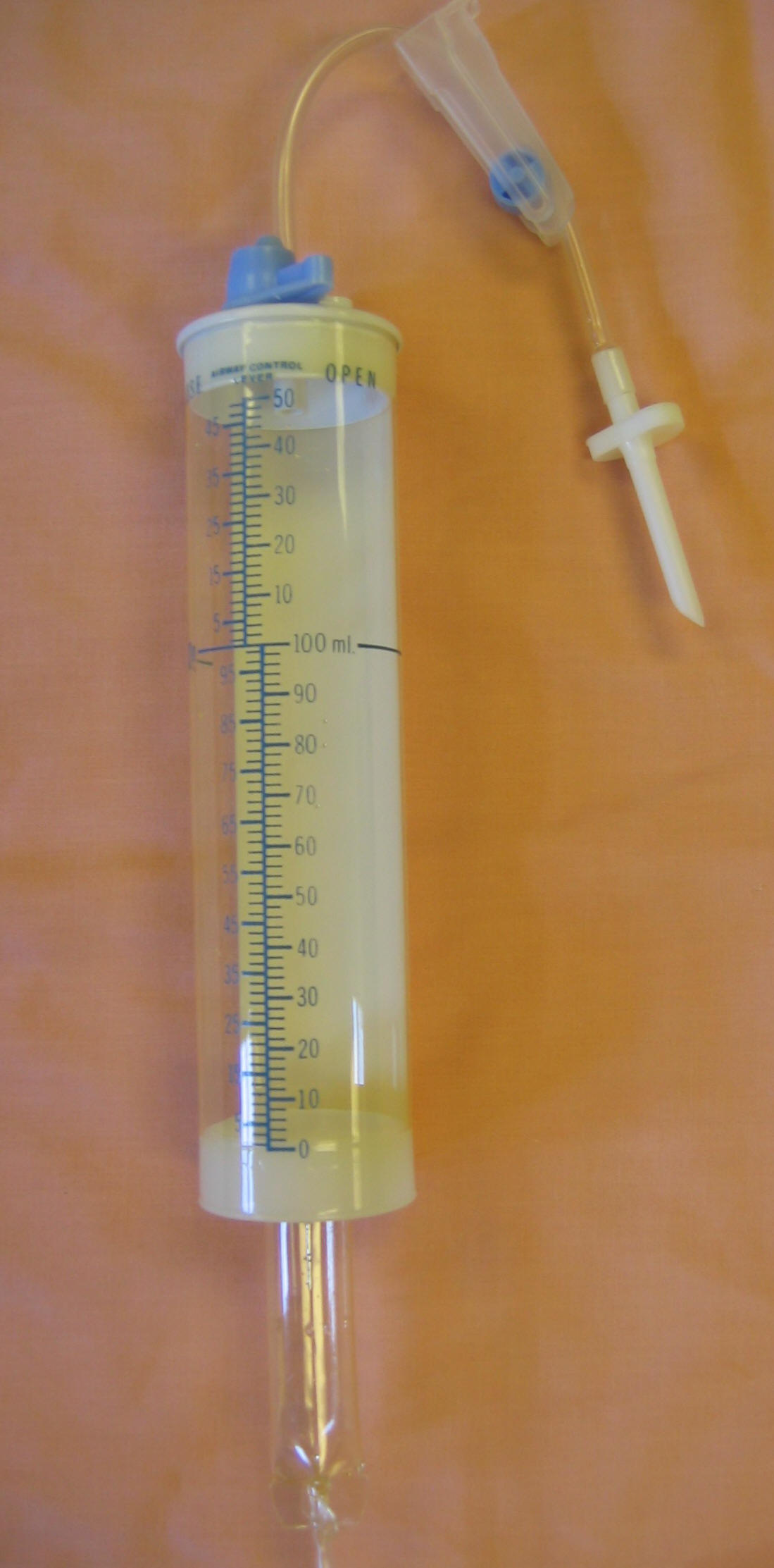 |
Description:
A
buretrol is a type of infusion device that holds limited
quantities of IV fluids or medications. It is generally used
for pediatrics and often is designed to prevent free flow of
fluids or air once the infusion is done (children are less
able to handle large fluid influxes like adults can). The IV
fluids are attached above the buretrol and refilled manually as the
volume decreases. (Index)
|
|
|
Carpuject® |
|
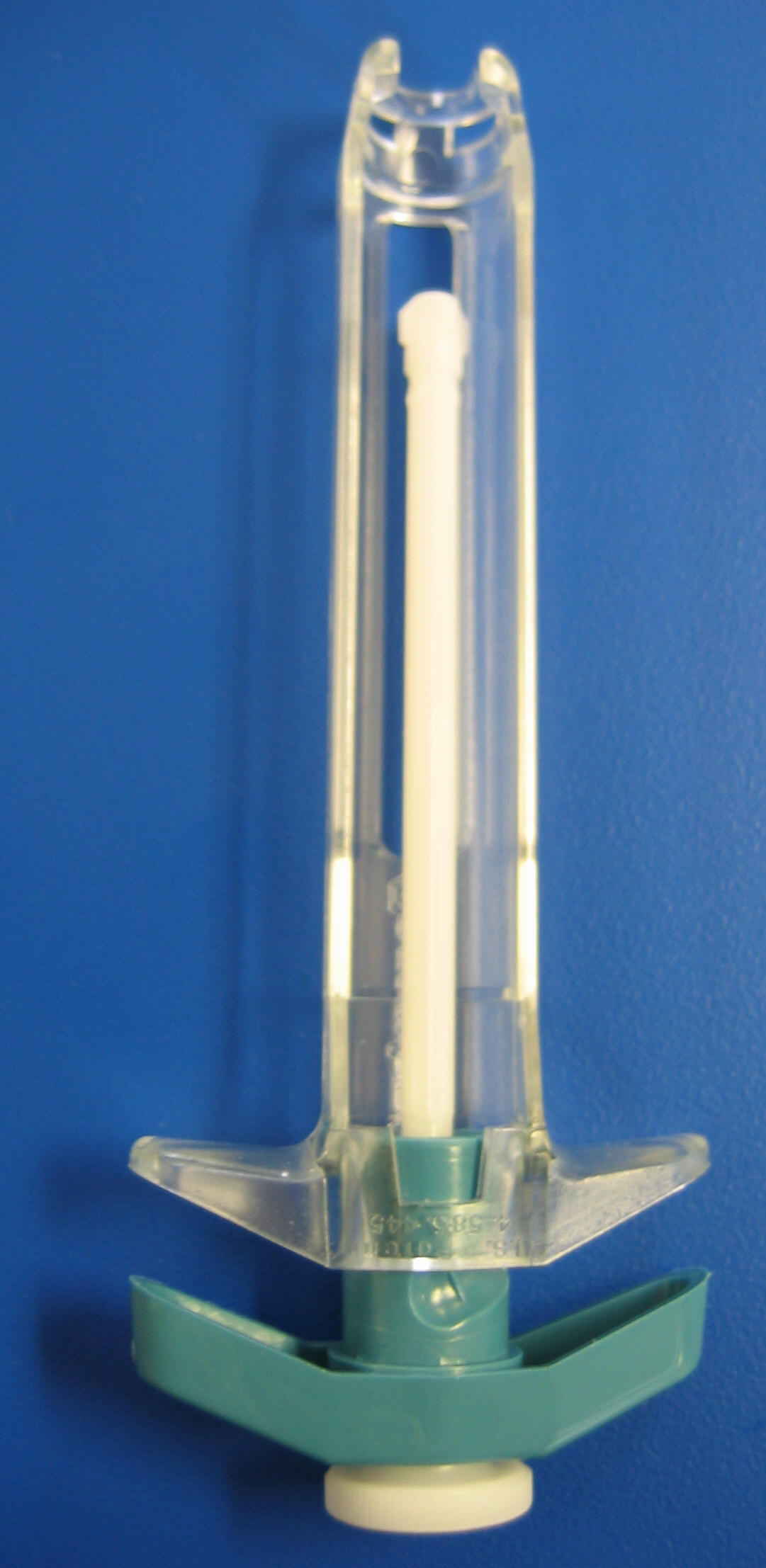 |
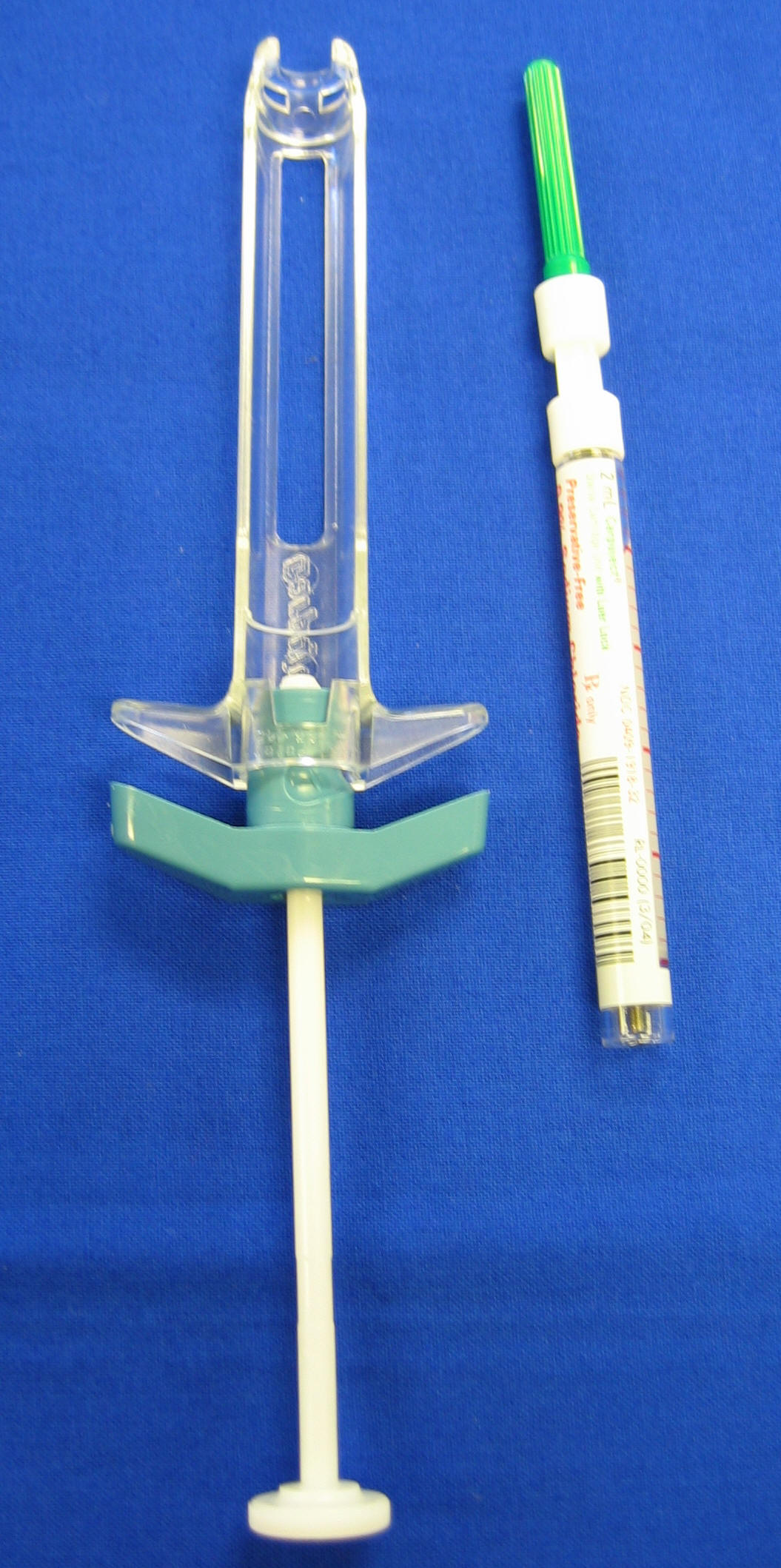 |
 |
Description:
A
Carpuject® allows for administration of medications that are
pre-filled. Carpujects can be re-used and are often found
throughout the care unit. To load a carpuject you need to
first make sure the device is open (the bottom blue part
must be unscrewed). The prefilled syringe
needs to be inserted into the open space. The while plunger
is then screwed into the bottom of the pre-filled vial until
it is tight against the bottom of the vial. Once this is complete, the blue portion
on the bottom is twisted to lock it in place (Index)
|
|
|
Clave Ports |
|
 |
Description:
Clave ports allow access to the IV tubing or a saline lock. A
syringe is directly attached to the port rather than using a
blunt tip or regular needle. Clave ports can be multiple
colors but have the characteristic threads necessary for
attachment of the syringe. (Index)
|
|
|
Clip-lock
cannulas |
|
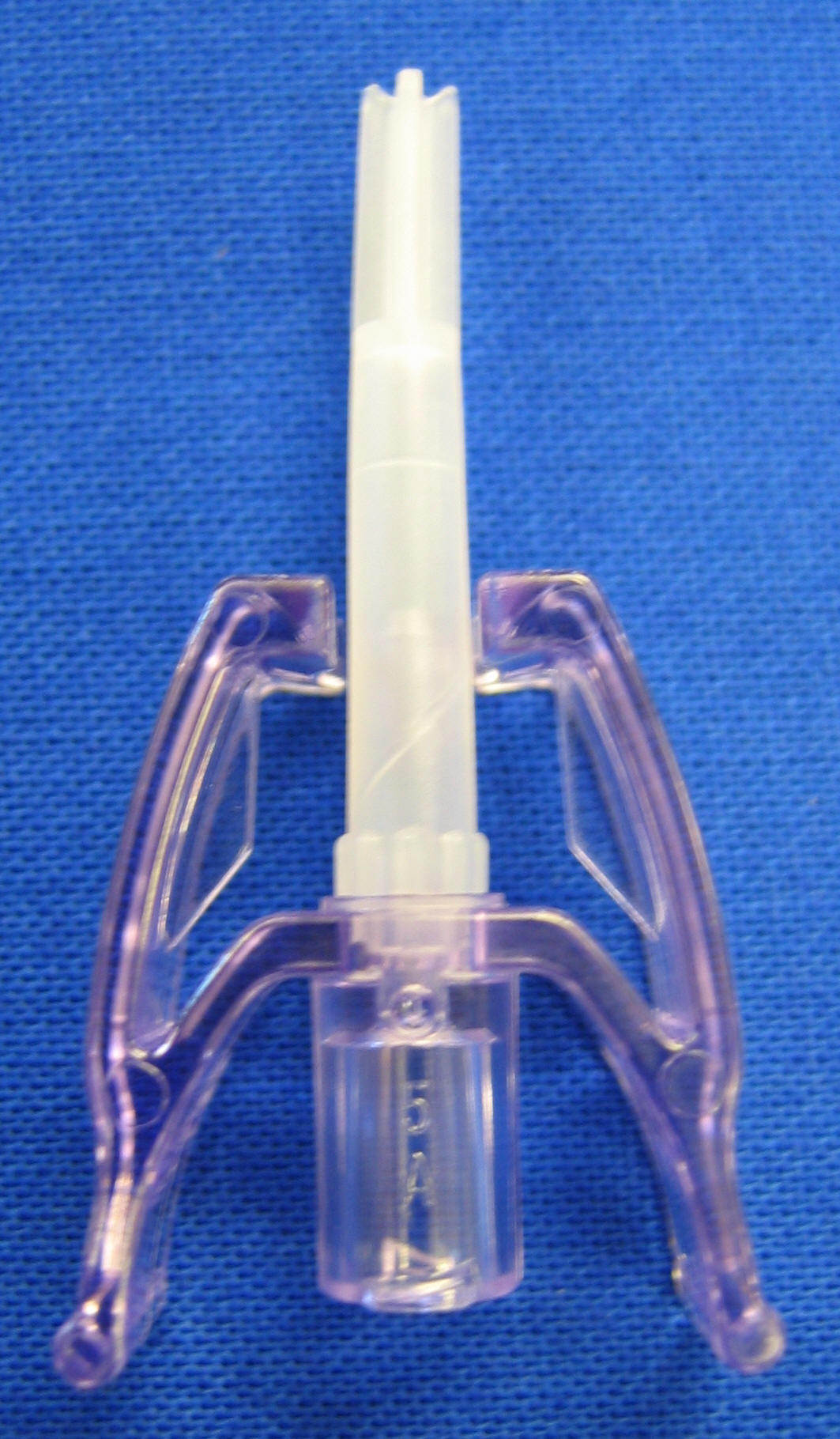 |
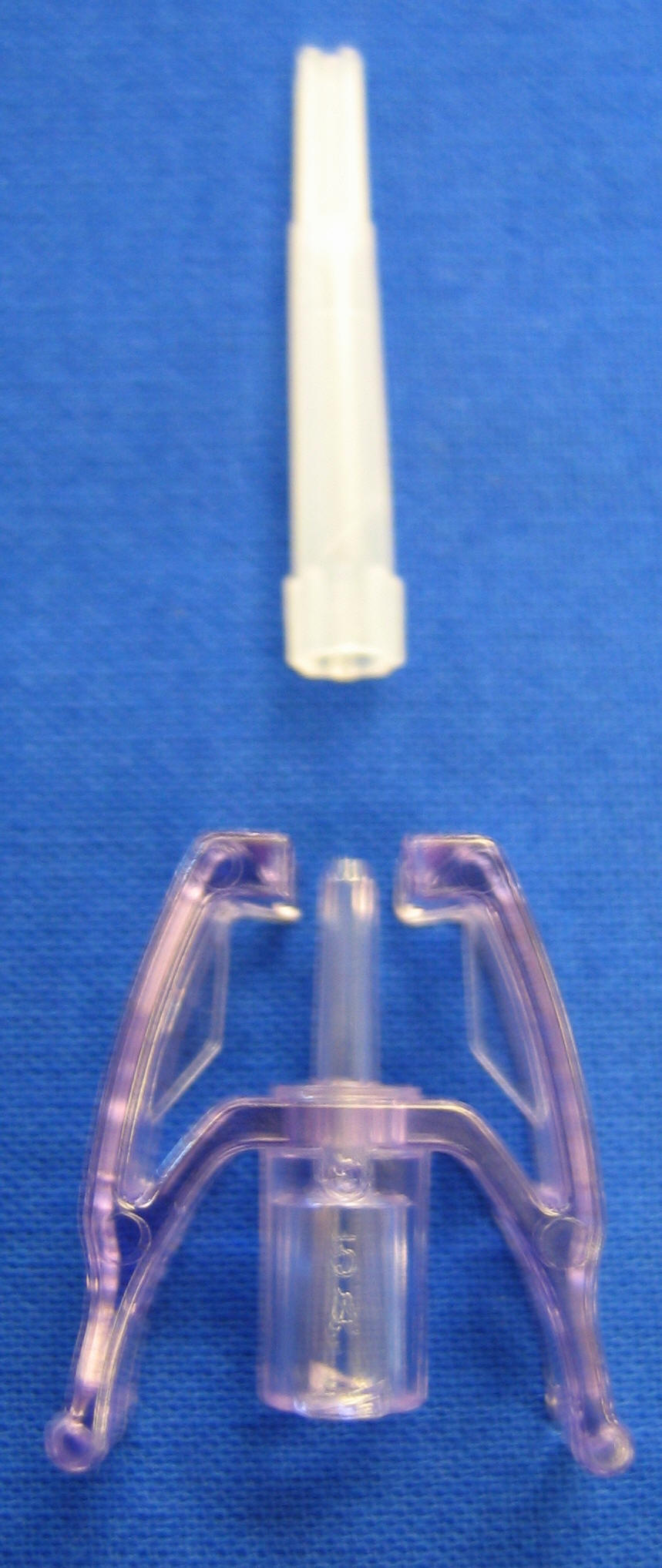 |
Description:
The clip-lock cannula allows for secondary tubing to be
attached to the main IV line (e.g. for the infusion of piggyback or
syringe pump medications). It is essential that
the cannula is first attached to the secondary line BEFORE
attaching to the main line. Again, they may be many colors
but are commonly purple or
orange. (Index) |
|
|
Drug vial adaptor |
|
|
 |
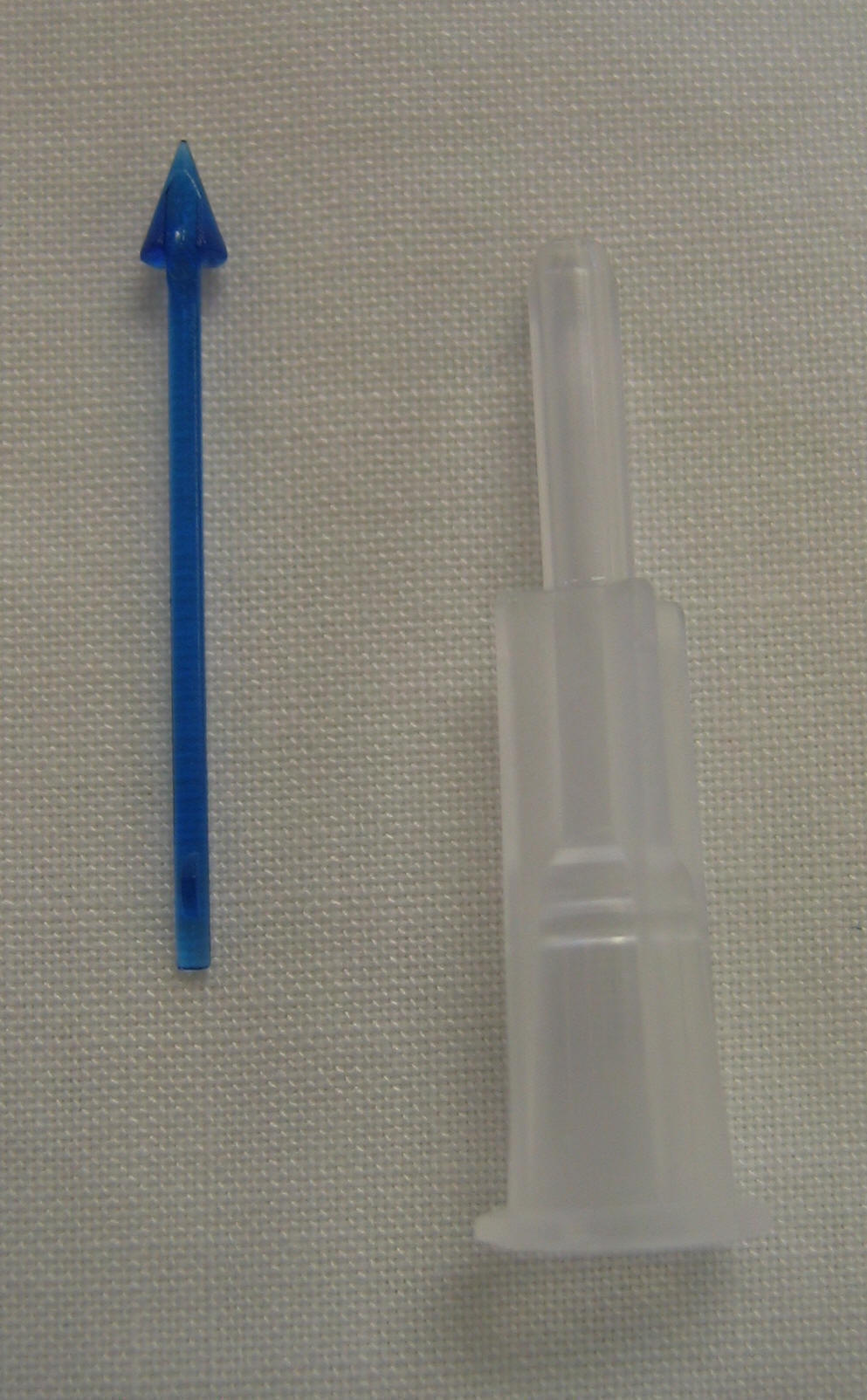 |
Description:
A
drug vial adaptor allows for repeated access to a vial of
medication. The blue spike seen CANNOT be removed from the
vial once inserted. For this reason, a drug vial adaptor
with the blue spike in it should never be used to access an
IV line directly. (Index) |
 |
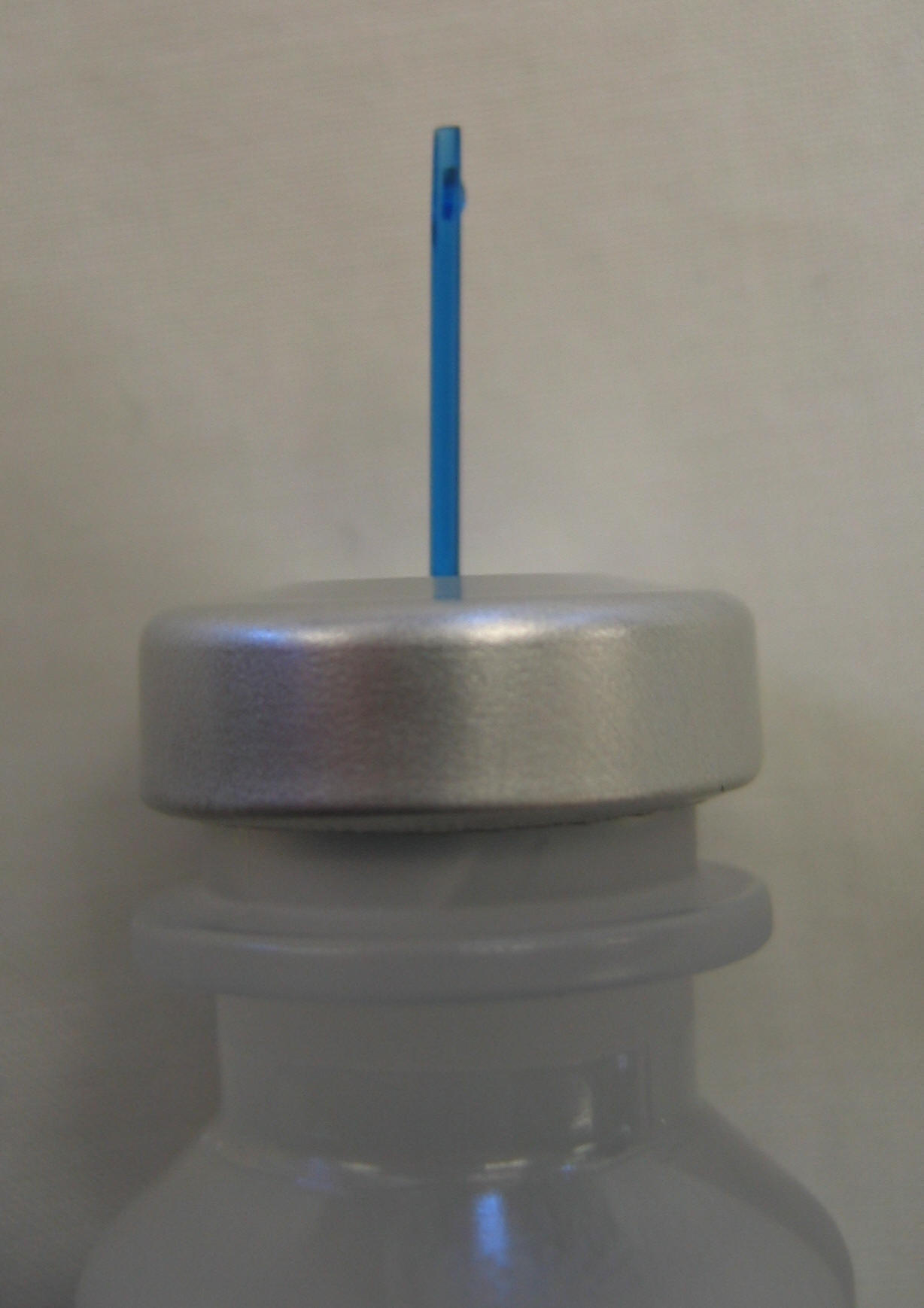 |
|
|
Filter Straw |
|
|
 |
Description:
A
filter straw or needle is used to draw up medications from a
glass ampule. The filter straw/needle CANNOT be used to
inject medications, it must be removed once the medication
is drawn up. (Index) |
|
|
Flush |
|
 |
Description:
A
flush syringe is a pre-drawn vial of fluid (usually normal
saline) that can be used for multiple purposes including
clearing a line after IV bolus, establishing a saline lock
or testing for line patency. It may come in many shapes, sizes and amounts (e.g. 3cc,
5cc, 10cc). The flush pictured could be attached directly to
a clave port. Some flushes are designed to be administered
using a Carpuject®. Flushes that are pre-packed generally
need to be primed, namely the air needs to be removed and
the seal needs to be broken. Saline flushes should not
be used for reconstituting medications. (Index) |
|
|
Needles |
|
|
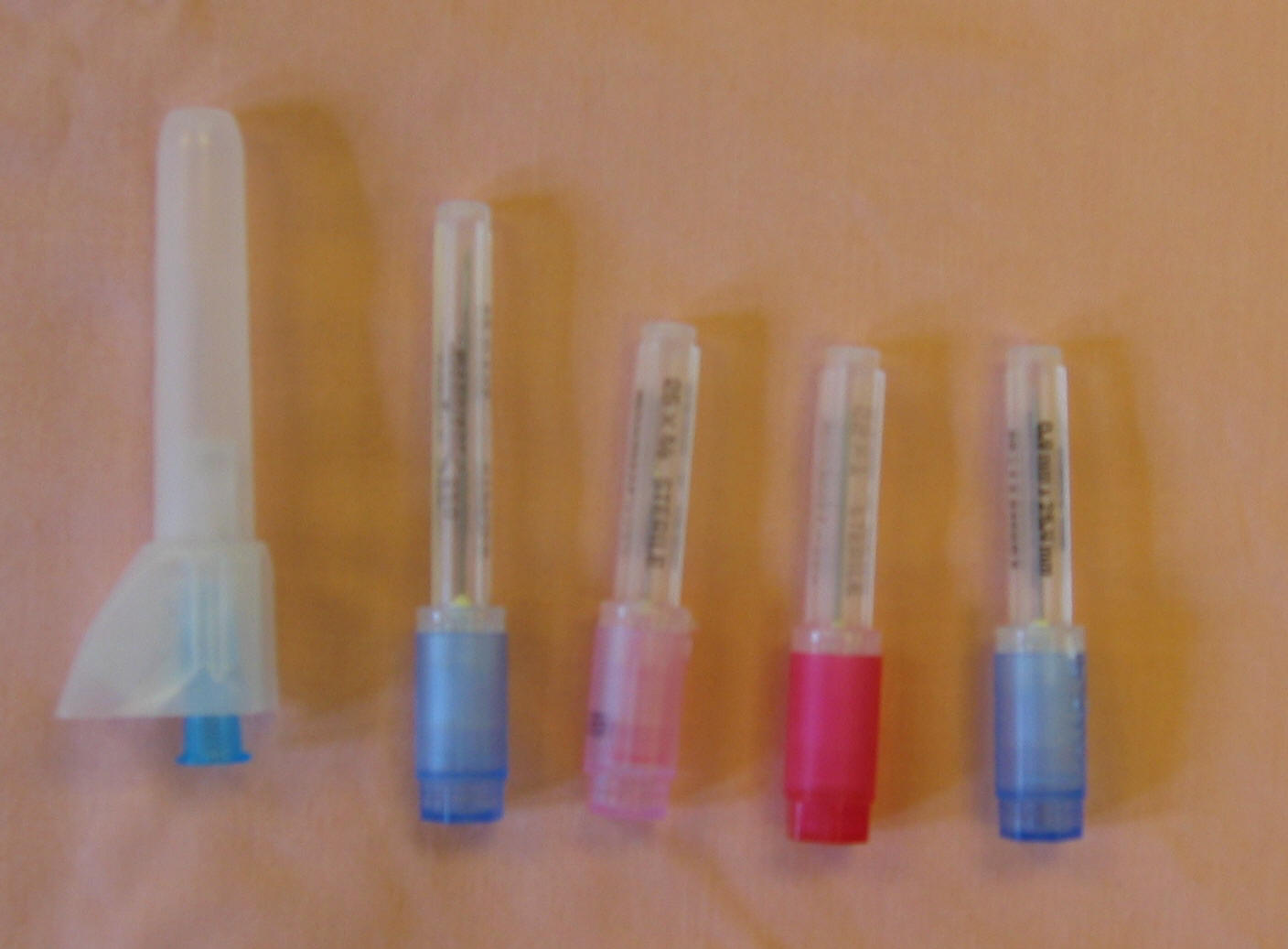 |
Description:
Needles can be a variety of different gauges (needle size
increases as the gauge (which refers to the diameter of the
needle itself) decreases, e.g. a 12 gauge needle
is bigger than a 22 gauge needle). Needles can be a variety
of different lengths as well, the length used will depend on
what it is being used for (e.g. IM injection versus SQ
injection). Many care areas are trying to eliminate or
greatly reduce the use of needles to prevent needle-stick
injuries. Needles that are still needed often have safety
devices on them such as plastic sheaths that slide over the
needle once it has been used (e.g. the needle pictured on
the far left). Needles can be used to access
needle-less and normal ports but CANNOT be used to access
clave ports. Needles are NOT the preferred method of
accessing IV lines and ports. (Index) |
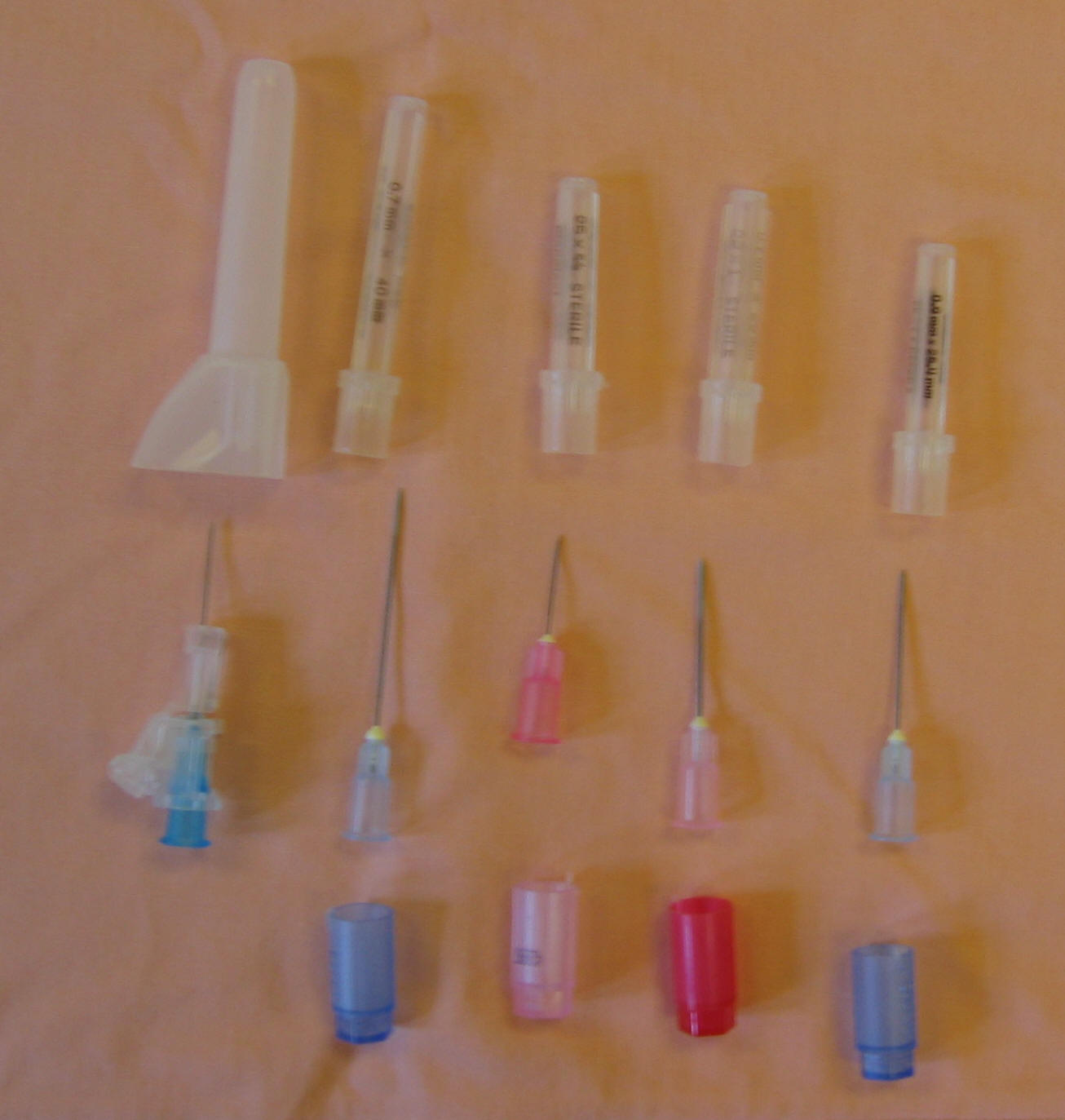 |
|
|
Needle-less ports |
|
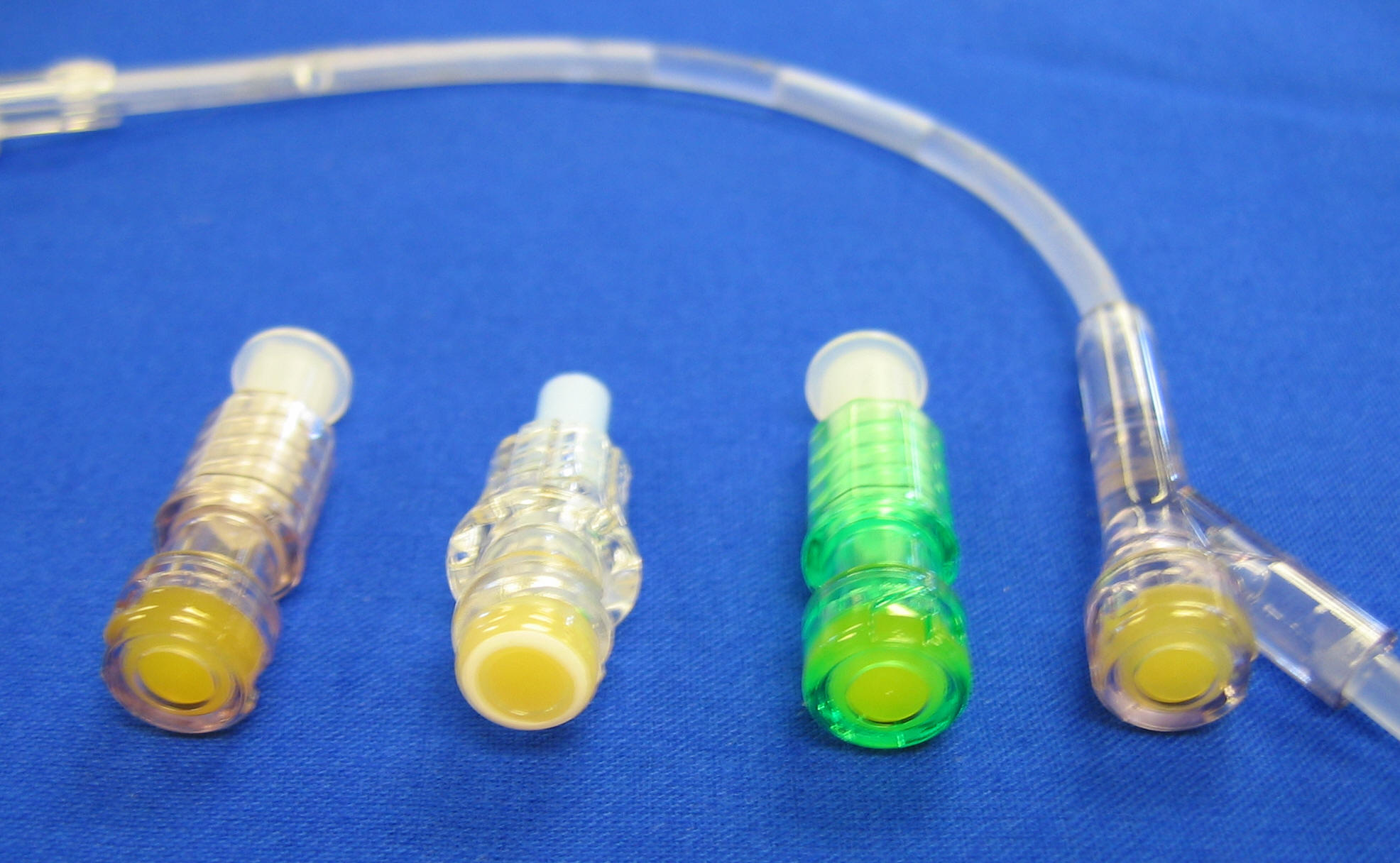 |
Description:
Needle-less ports can be accessed using blunt tip cannulas, regular needles
or click-lock cannulas. They may be a variety of colors but are
a standard size. The item on the far right is a blunt-tip port on an IV line.
(Index) |
|
|
Saline lock |
|
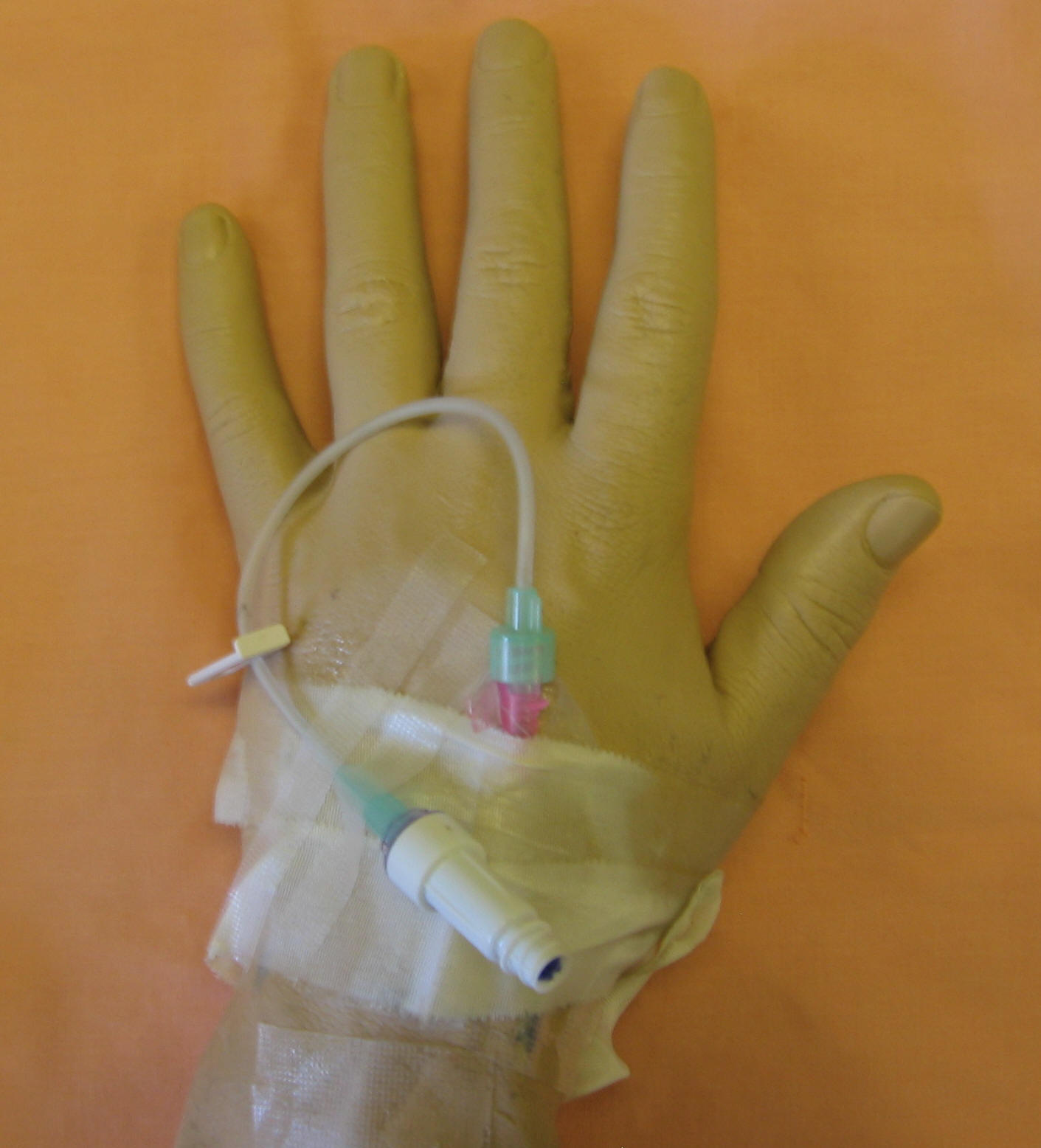 |
Description:
A
saline lock (sometimes called a heparin lock) is initiated when a patient no longer needs IV
fluids, but may still need IV access for emergencies or
future infusions. Accessing a saline lock for
medication administration is dependent on the type
of port that is at the end of the IV tubing.
A clave port is picture here. (Index) |
|
| |